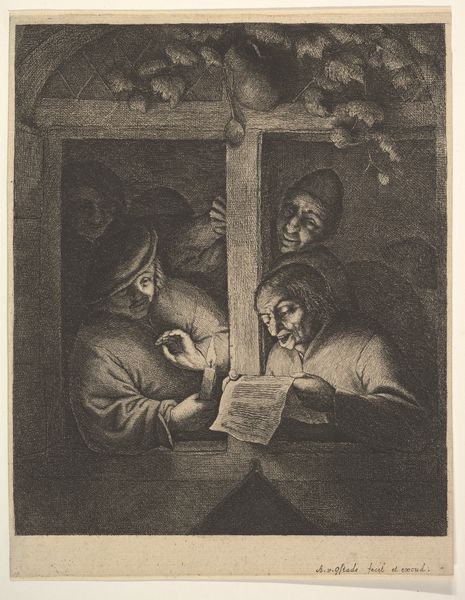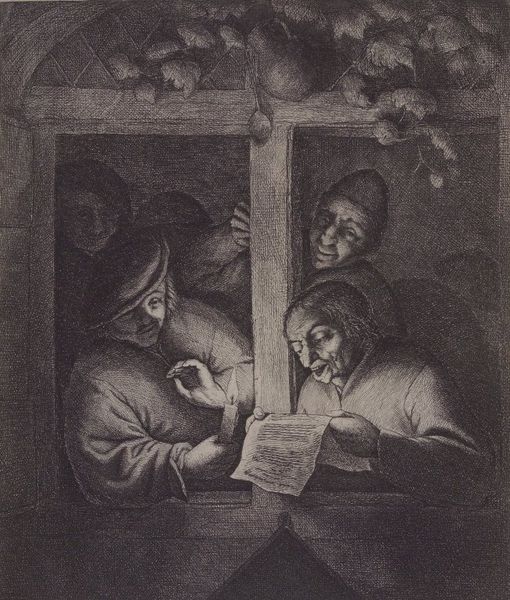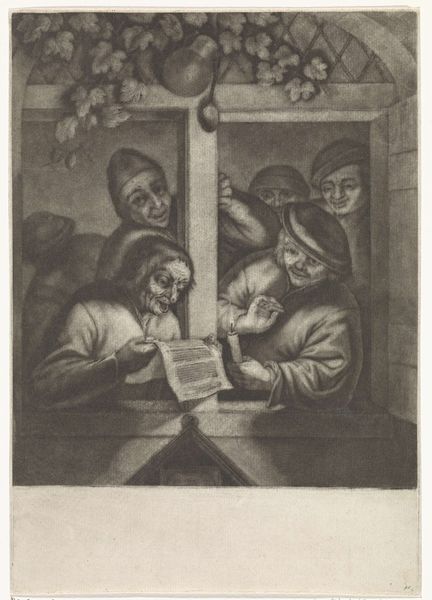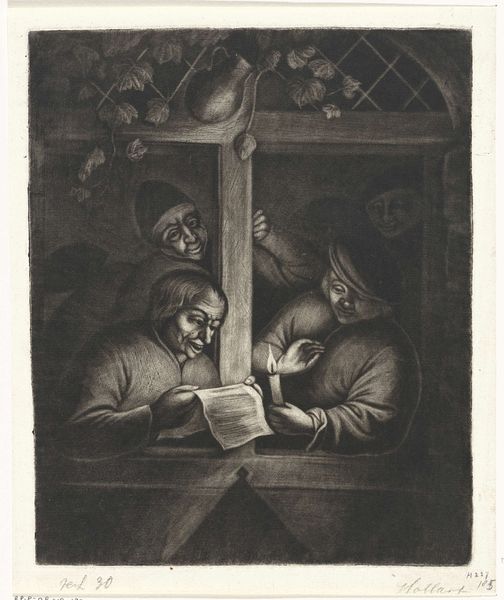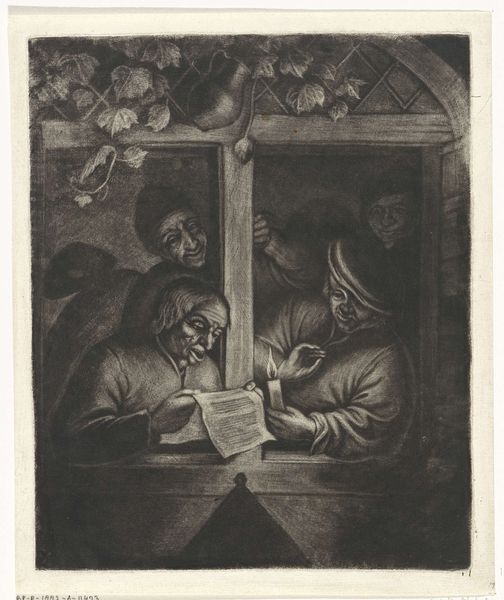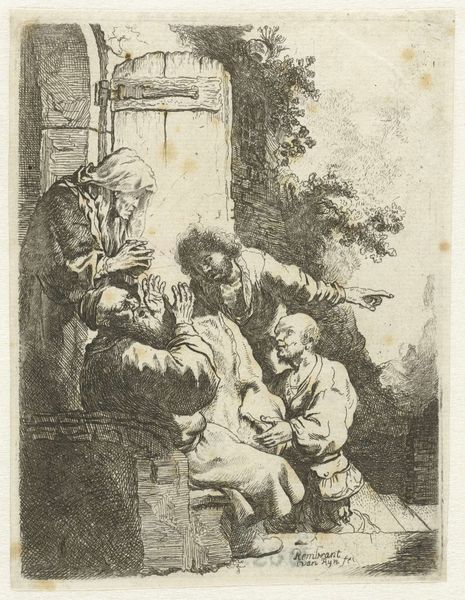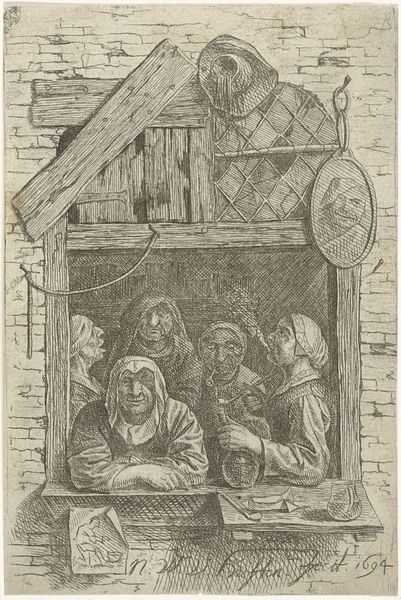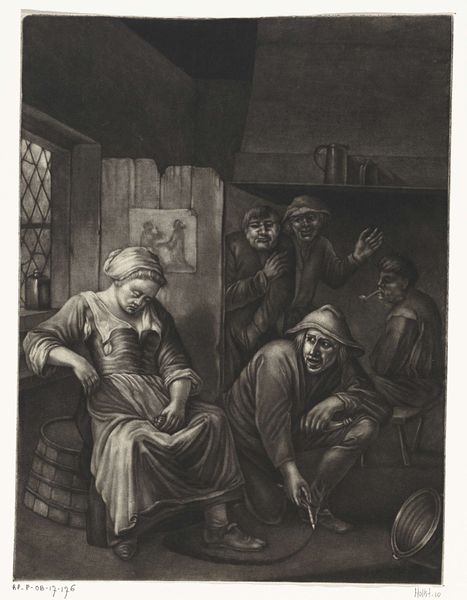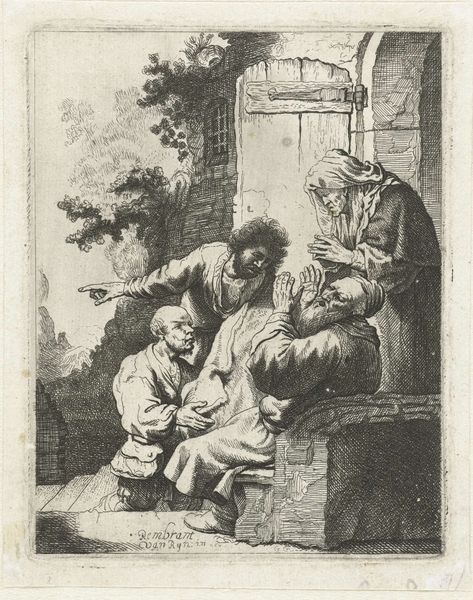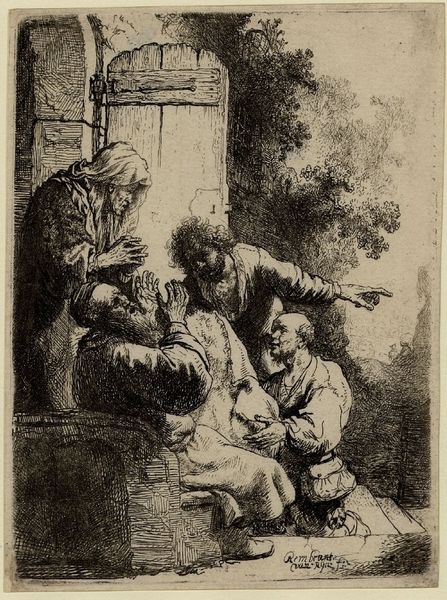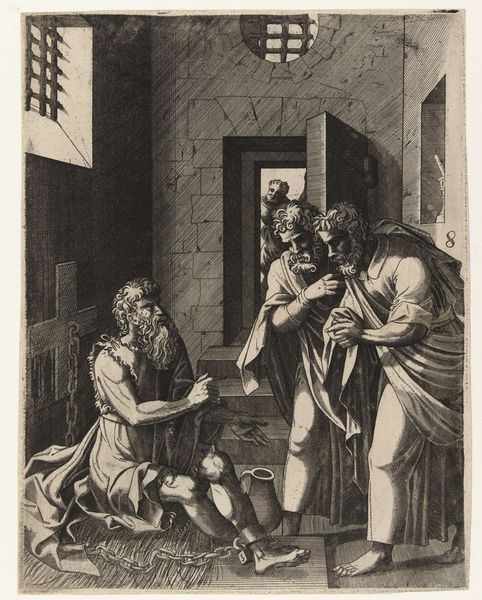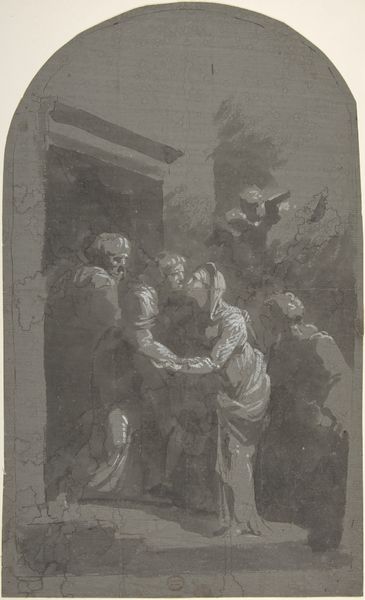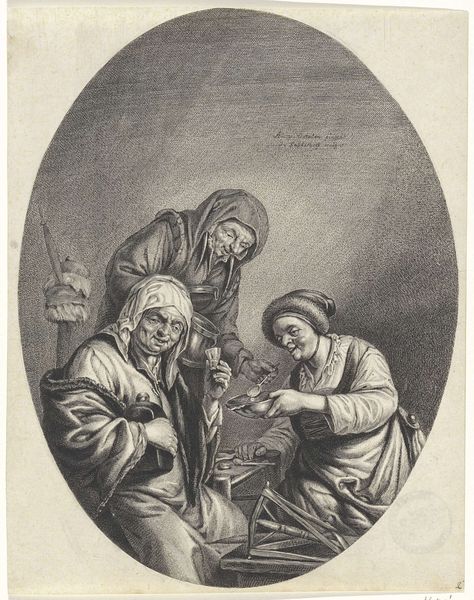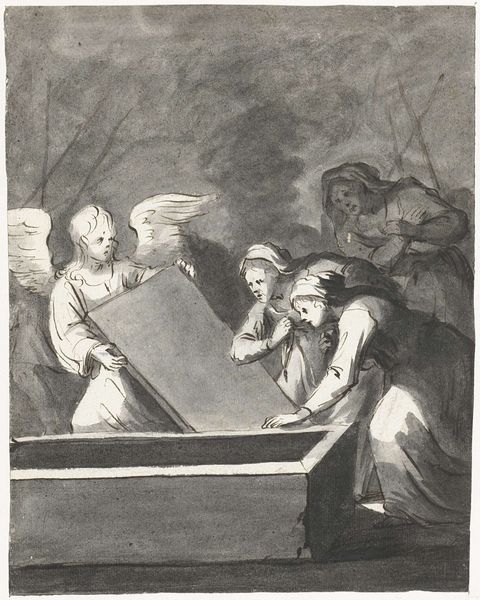
Drie mannen zingen van blad papier bij kaarslicht in open raam 1666 - 1670
0:00
0:00
print, etching
#
portrait
#
dutch-golden-age
# print
#
etching
#
genre-painting
Dimensions: height 241 mm, width 190 mm
Copyright: Rijks Museum: Open Domain
Curator: Okay, let's dive into this etching by Adriaen van Ostade, dating from 1666-1670. It's titled "Three Men Singing from a Sheet of Paper by Candlelight in an Open Window," and we have it here at the Rijksmuseum. What jumps out at you? Editor: The claustrophobia, immediately. The low light, the close quarters. It feels like a clandestine gathering, perhaps some forbidden verse? Or maybe it’s just that the ordinary becomes secretive under the cover of darkness and candlelight. Curator: Mmm, clandestine, perhaps! I feel more like it captures a cozy, intimate, if slightly drunken moment. You can almost hear their voices, off-key and boisterous, attempting harmony in the dimly lit space. And they do seem very crammed together! Editor: Right. Consider the context: 17th-century Dutch Republic, burgeoning mercantile power, but also strict social hierarchies. Whose voices were amplified and whose were suppressed? Were these working-class men finding their voice through song, however flawed? Or merely reproducing the patriarchal narratives that defined their time? And who’s lurking in the shadows above? Curator: I love that reading! The men lurking definitely add a sinister, spy-like mood to this humble domestic scene. Ostade, in other works, certainly showed a fondness for depicting peasant life, sometimes romanticizing it, sometimes poking fun. The etching technique is so effective here too – the scratchy lines amplify the raw, almost gritty feel. I wonder how intentional that was on his part. Editor: Ostade clearly uses the tonal possibilities of etching to their fullest. By manipulating darkness, Ostade is able to build the sense of mystery which is palpable here. Is he celebrating everyday existence or, instead, holding it up to critique? Is this scene just entertainment for the bourgeois art consumer of his time? The interplay of light and dark mirrors these tensions perfectly. Curator: The etching medium makes me feel so connected to his process! And the idea that they are singing to nothing is interesting, it evokes the idea of joy or solace in community. Maybe they were trying to raise money, though, Christmas carols, a winter solstice ritual… it sparks so many imaginative reflections! Editor: Indeed, its open-endedness, it welcomes layers of interpretation. This piece pushes us to interrogate not just what we see, but the power dynamics and unspoken narratives behind these intimate moments of music-making in the 17th Century. Curator: And so, a simple image of a few men singing evolves into an invitation to explore not only their lives but our own complex relationship with art, community and history. Editor: An intriguing artwork—the past echoes in the present.
Comments
No comments
Be the first to comment and join the conversation on the ultimate creative platform.
